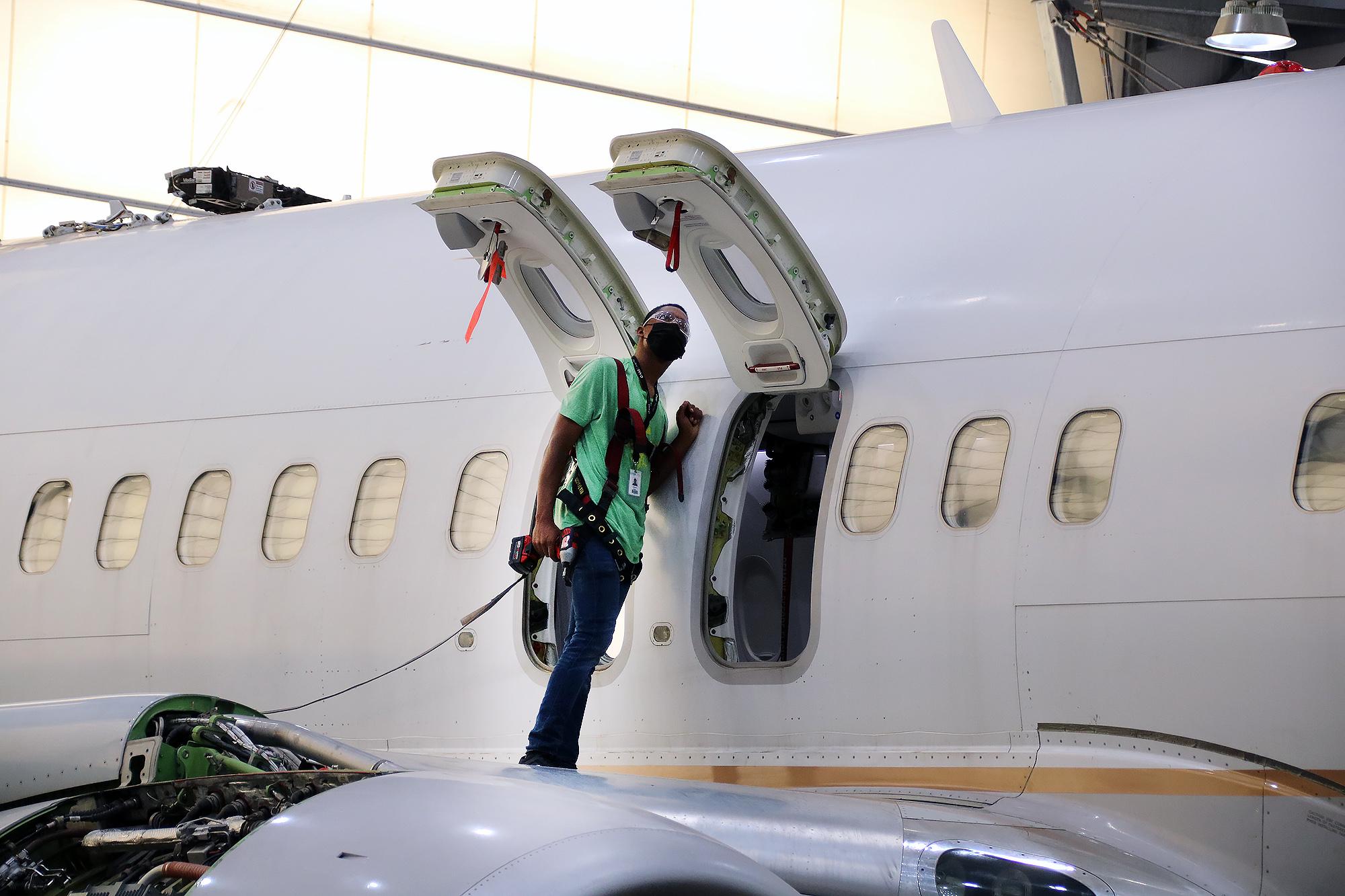
The MRO workforce in the U.S. was significantly downsized during the COVID-19 pandemic, with many airlines and maintenance providers making the difficult choice to cut jobs and offer early retirements to established technicians. However, one airframe maintenance facility in northern Illinois bucked the trend, nearly doubling its workforce during the pandemic.
Located approximately 90 mi. northwest of Chicago, AAR’s Rockford facility has grown over the past couple of years from approximately 25 employees to more than 200. According to Dany Kleiman, group vice president MRO at AAR, the facility’s future was shaky around two years ago, but AAR’s board decided instead to invest in the facility as one of the largest in its network moving forward. Rockford was the only AAR location where no employees were furloughed or laid off during the pandemic.
The growth, he says, is in large part due to the multi-year agreement AAR signed in April with United Airlines to provide heavy maintenance services in Rockford. The independent MRO plans to add up to 250 more aviation maintenance technician (AMT) jobs at the facility to meet increased demand from United, which Kleiman says will be AAR’s primary customer in Rockford.
“We went through a pretty accelerated journey of recruiting people,” says Kleiman. “It’s pretty hard to recruit highly skilled, experienced workforce, so we had to invest a lot in training programs.” He adds that AAR hopes to eventually transition the majority of the site’s workforce to become full-time employees rather than contract workers.
The Rockford facility is leveraging many of AAR’s workforce initiatives and partnerships to meet its hiring goals. In July, the company announced a partnership with Alaska Airlines to tackle the aviation maintenance technician shortage and increase workforce diversity. Participants in the program will spend three years working at an AAR maintenance facility before qualifying to apply for career openings at one of Alaska’s 14 maintenance bases. Although the nature of the program means some talent will leave AAR for a coveted airline position, Kleiman believes the partnership will still be beneficial for AAR.
“At the end of the day you invest all these resources, training and everything else and you don’t want employees to go, but there is a natural attrition anyway,” he says. “We understand the price we are going to pay at the end, but it is our assumption that this entire process will create a larger pool of good employees who will stick around for a long time at AAR.”
Chris Toppin, AAR’s group vice president of human resources for repair and engineering services, notes that most of the company’s voluntary attrition is in the 0-3 year range, so he actually expects the program to help AAR hang on to employees that may have otherwise left sooner. “I think a lot of employees are going to choose to stay with AAR because it’s a mid-sized company with greater visibility and [provides] a quicker path to grow,” he says. “There are some employees who may want to stay on the maintenance technician route and just be a subject matter expert and that may be a good path for them.”
In addition to increasing workforce diversity through the Alaska partnership, AAR is also tackling the challenge through initiatives such as its all-female AMT cohort in Miami. Kleiman says the Rockford facility is already one of AAR’s most diverse and that it is using lessons learned from Miami to fuel new initiatives in Rockford.
AAR is also recruiting talent from the military with initiatives like its recent partnership with VIPER Transitions and its SkillBridge program with Embry-Riddle Aeronautical University, which will be adding its seventh location at Fort Campbell Army Base in Kentucky this September.
Locally, the Rockford facility is working with Rock Valley College—which has an Aviation Maintenance Technology program located right across the street from AAR—to bring on more skilled workforce. The school became part of AAR’s EAGLE Career Pathway program in 2019.
Troy Primus, vice president of operations at AAR Rockford, says RVC students are given the opportunity to spend time in the Rockford facility and learn about job opportunities, including working at AAR part time as a student. “One thing we try to point out is that a lot of those students are Rockford people and we want to maintain them in Rockford, so this is an avenue for them to stay here and not have to go elsewhere looking for opportunities in aviation,” says Primus.
AAR Rockford is also recruiting from Olive-Harvey College in Chicago, which is offering an aviation maintenance associate degree in partnership with the Aviation Institute of Maintenance at its new Chicago campus. Olive-Harvey is part of AAR’s EAGLE Pathway Program and the MRO provider has been working with the school on developing curriculum and obtaining training aircraft.
Primus says AAR CEO John Holmes will be coming to Rock Valley College at the end of this month to meet with students and staff to reiterate the types of opportunities available to them at the company. However, he notes that filling all the positions AAR is adding in Rockford to meet new demand may be easier said than done.
“Even prior to the pandemic, those students were getting recruited by airlines out of O’Hare, so it’s really competitive for us, even in our backyard, to go out and try to get people to come over because we’re competing with the airlines,” says Primus. “Now that we’re out of the pandemic and [the industry] is going up, we anticipate those same challenges going forward.”





